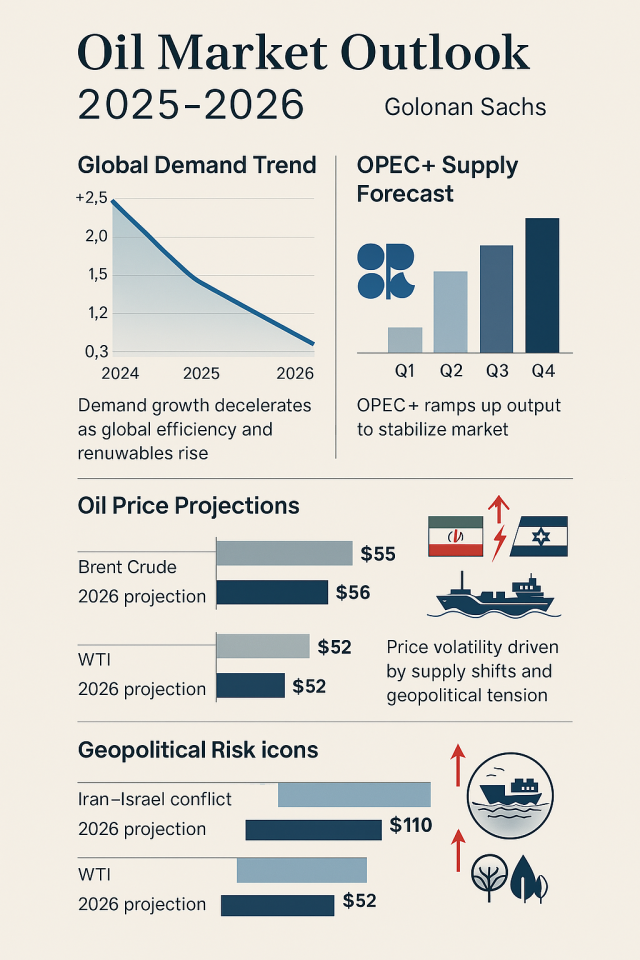International Desk: Renowned investment bank Goldman Sachs has projected that the global oil market is entering a phase of heightened instability over the next one to two years as demand growth slows while supply pressures intensify. According to recent forecasts and research, the bank expects global fuel demand to decelerate significantly in the second half of 2025 and potentially contract further by 2026 which could put sustained downward pressure on oil prices.
The analysis reveals that although global oil demand is currently increasing by around 1.2 million barrels per day in 2025 this growth may slow sharply in the following year. By 2026 the increase in daily demand could drop to as low as 300 thousand barrels per day indicating a major slowdown across the energy sector. The key factors behind this shift include a weakening global economy sluggish industrial output in China and Europe and a broader shift toward clean energy alternatives.
On the supply side the outlook remains uncertain as the OPEC Plus alliance led by Saudi Arabia Russia and the United Arab Emirates is reportedly moving to ramp up production. Goldman Sachs predicts that OPEC Plus could increase output by up to 2.1 million barrels per day by the end of 2025 a move that risks creating a surplus in the global market.
Regarding oil prices the bank noted that while Brent crude is currently trading around 85 dollars per barrel it could fall to as low as 56 dollars by 2026. Similarly West Texas Intermediate or WTI might decline to approximately 52 dollars per barrel. However Goldman Sachs has cautioned that geopolitical disruptions such as a military conflict between Iran and Israel or a blockade in the Strait of Hormuz could trigger a sudden price surge pushing Brent to as high as 110 dollars per barrel.
In the face of these contrasting forces of supply and demand Goldman Sachs has urged investors to remain cautious especially when making decisions in volatile and high risk environments. The firm advised close monitoring of China’s economic trajectory and key policy decisions by OPEC Plus as both will be critical in shaping market behavior in the coming months.
Analysts believe the global oil market is now at a crossroads shaped by both economic stagnation and political uncertainty. These factors will play a pivotal role in determining future price movements and investors are being advised to prepare for a period marked by high sensitivity and strategic positioning.











